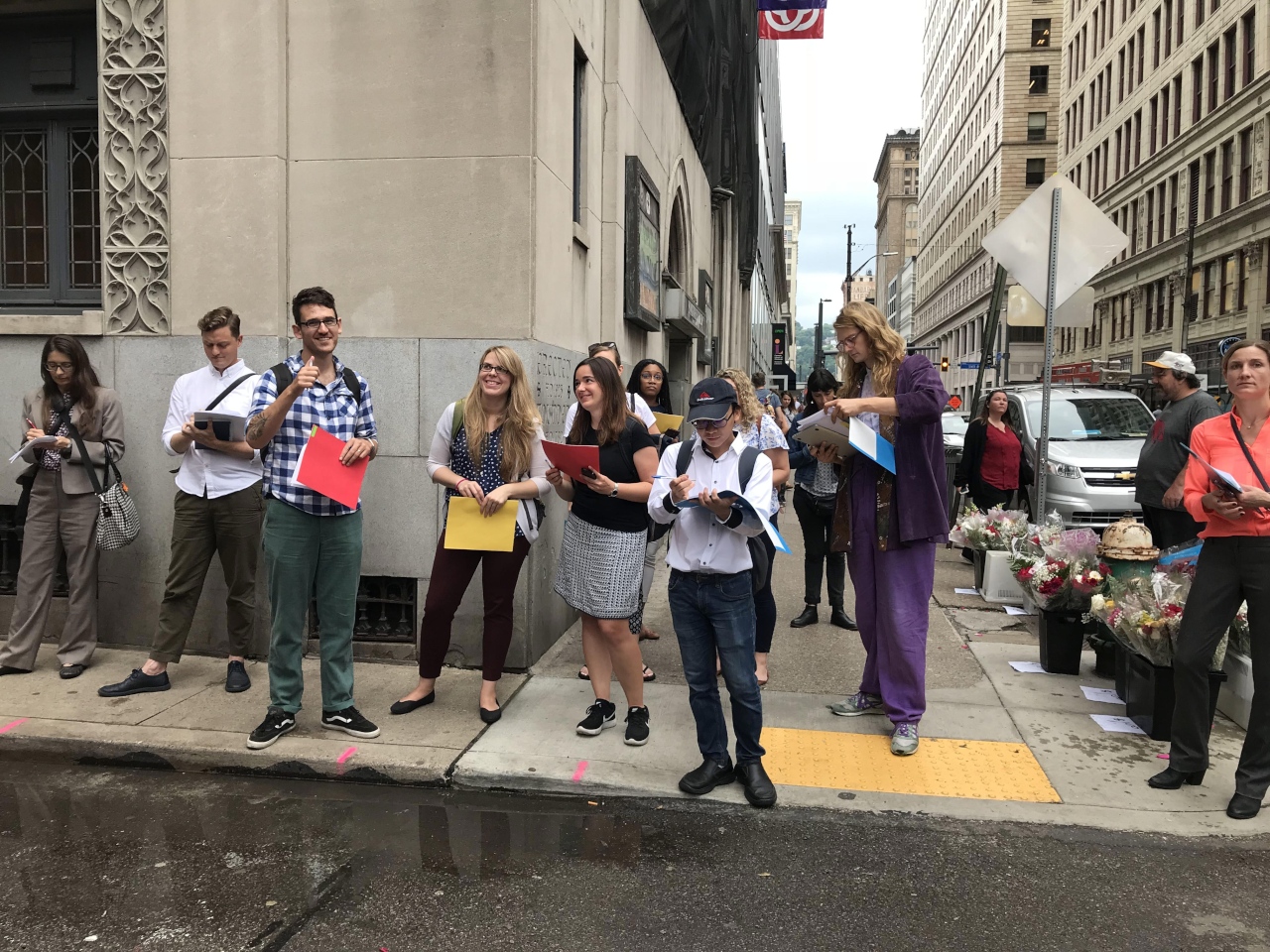Report on Joint SPSSI-EASP Meeting: Mapping Space/Place and Psychology
29.06.2019, by Tina Keil in meeting report
June 28th, 2018 in Pittsburgh, PA, USA; Organizers: Jessica Salvatore (Sweet Briar College) and Thomas Morton (University of Exeter)
 in total, 2 pictures
in total, 2 pictures
Social psychology concerns itself centrally with the importance of context for understanding the thoughts, feelings and actions of individuals as well as groups. Yet context is routinely treated as something that happens inside people’s heads: the activation of a concept in a questionnaire, or experimenter-delivered feedback about the generalized behavior of other people. For many of the issues that social psychologists are interested in, contexts are material: people inhabit certain spaces, spaces that can come to be refuges (or not) from the stresses and strains of daily life; people move from one place to another, either chosen or forced, and interact with (or ignore) each other in specific places; places can become homes that contain and protect people, property, communities and the identities connected to these; and because of all of this individuals and groups battle over territories, boundaries and borders, as they try to situate themselves in the physical world.
The dynamic connections between individuals or groups and physical spaces or places plays out across a variety of different domains and scales, including educational settings, organizations, communities, and society as a whole; and concern with these dynamics has a long history in neighboring disciplinary fields (like human geography, sociology), as well as neighboring sub-disciplines (like environmental psychology). In social psychology too, there is evidence of a growing interest in the ways in which psychological and social processes are embedded in, or otherwise connected to, people’s physical surroundings and the real-world spaces and places within which such processes occur.
This one-day workshop preceded the 2018 SPSSI conference on "Bridges to Justice: Building Coalitions and Collaborations Within and Beyond Psychology", and brought together 24 researchers (of whom 7 were EASP members and 15 were SPSSI members) working on the connections between space, place and psychology from a variety of different methodological and theoretical perspectives. Our goal as organizers was also to create a space, both physical and conceptual, within which our contributors would not just transmit their work to others, but also network, share ideas and resources, and develop collaborations that travel forward into the future. To achieve this, we tried to do a couple of
things differently. First, we actively prioritized junior researchers over senior academics. We did this because in this emerging, interdisciplinary field there are no obvious places to meet and talk. Especially for new researchers, just being able to locate each other, and make connections, is a rare opportunity.
Second, we also experimented with the format. Rather than follow the standard model of a series of individual talks one after the other, we clustered submissions into blocks organized around a theme (see programme). Within each theme, a subset of participants agreed to give ‘focal talks’ whereas others were invited to submit ‘empirical contributions’. The former were often broader – either because they sought to introduce new theory, integrate novel theoretical or disciplinary approaches, or advocate for new methods. The latter were short papers summarizing the central idea and finding from their work (basically, a graphical abstract, or a poster). These written submissions were circulated in advance to everyone, and those giving focal talks were explicitly directed to engage with the empirical contributions in their presentations – a request our presenters accommodated by, for example, highlighting findings complemented their own work and ideas, or signaling future directions inspired by the empirical contributions they saw. Finally, at the end of each cluster, all contributors (focal talks and empirical contributions) were invited to come together as a panel and take questions from the audience. In this way, we actively tried to engineer discussion between researchers working on common themes, and to ensure that the dialogue extended beyond responses to individual speakers one at a time. We’re not sure how well this worked (but we suspect based on informal feedback that it was well received!), but we’re really happy that the format allowed us to invite more people than would otherwise have been possible in a standard format.
Finally, we tried to have fun. The atmosphere was informal and relaxed. Given the theme of the workshop, we tried to engage with the local space of Pittsburgh – something that was facilitated by an interactive methods demonstration/ walk through the city center, guided by one of our participants (Shellae Versey). Finally, to further our goal of creating a space where conversations could continue, and networks could grow, at the end of the (long) day, we shared dinner over a large table in a private room where we could be as noisy as we liked without disturbing other diners.
We certainly enjoyed ourselves. More than that, we discovered a lot about the ways in which space, place and psychology connect, and the methods and theoretical approaches that uncover and explain these connections and we look forward to seeing where these ideas, and our participants, go in the future. We are very grateful to the support of EASP, SPSSI, and SPSP for making this possible.
Related content: